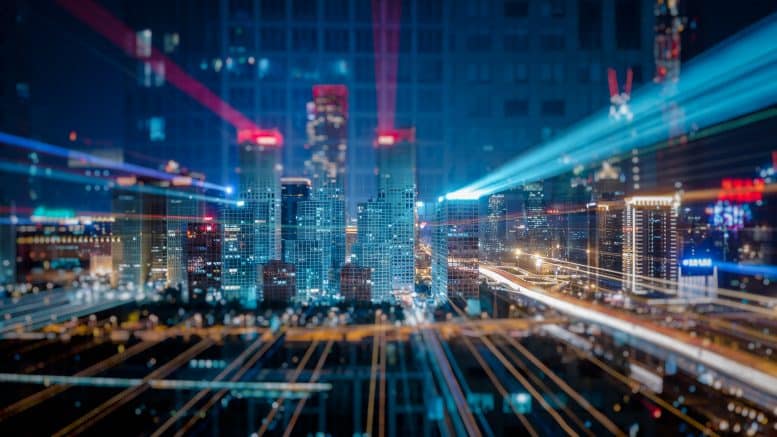 By Patrick Wood
By Patrick Wood
The concept of “smart growth” was a brilliant marketing strategy that was introduced in the early 1990s as an alternative phrase for Agenda 21. Americans don’t like to be included into “agendas” they did not create or approve of, but they instantly warmed up to the concept of being “smart”. In any case, who wants to be “dumb”?
The concept of Smart Growth has spawned a plethora of derivatives such as Smart City, smart phone, smart network, smart home, smart streets, smart cars, smart grid, smart appliances, etc. Essentially, the inclusion of “smart” has come to mean anything saturated with technology designed to control the object of its focus.
The Big Tech companies of Silicon Valley and similar tech centers fancy themselves to be urban planners, but that is a misnomer. Traditional urban planners seek to build functional cities that work for people whereas Smart City planners build functional cities focused on controlling people.
As you will remember from other essays in this series, one main object of Technocracy and Sustainable Development is to transfer resources from the hands and ownership of people and their representative institutions into the hands of a global common trust operated by the global elite. When David Rockefeller founded the Trilateral Commission in 1973 to create a “New International Economic Order”, grabbing resources became the master plan and Sustainable Development, aka Technocracy, became the means to that end.
Cities don’t have physical resources like farming, minerals, timber, etc. Rather, it is the rural areas of the world where such resources are found and developed. In preparation of taking over swaths of rural areas, Technocrats developed two coordinated strategies: First, move people from rural to urban settings and second, keep them there.
The United States contains 2.27 billion acres of land. The Federal government owns some 650 million acres, representing over 28% of our total land mass. Most Federal land is in the western states, which is rich with natural resources. The U.S. Constitution does not provide for broad Federal land ownership, but that has not stopped the government from ever-expanding its portfolio. Apologists for Federal ownership claim that the people of the U.S. own the land and therefore it is justified, but in fact, much of the Federal ownership is completely inaccessible to the public.
In China, where Technocracy reigns, land grab policies are more direct. For instance, it unveiled a plan in 2014 to summarily move 250 million farmers off their land by 2026 and into megacities that had already been constructed but sat vacant. The vacated farm land is being combined into giant factory farms to be operated by advanced technology such as agricultural robots and automated tractors. Ostensibly, the farmers who refuse to leave will be helped along with the barrel of a gun.
Once relocated into cities of the government’s choosing, these farmers will fall into a social engineering machine that will continuously surveil them, track them, assign social credit scores to limit their access to privileges, etc. They will never regain enough resources or mobility to leave their assigned cities. In other words, they will be trapped.
Smart City Development
Around the world, there are several common Smart City commonalities which can be easily observed in practice and literature:
- Surveillance. Biometric, geo-spatial tracking, financial, social media, etc. A population that is surveilled can be easily controlled.
- Transportation. Force people out of private vehicles into shared public transportation such as scooters, bicycles, busses, light rail, etc. Without private transportation, you are locked into the city and out of the rural area.
- Data. Collect real-time data from the Internet of Everything (IoE). IoE is an extension of the Internet of Things to include people as well.
- Control. Social engineering is always leading the thought process of Smart City development. However, the “engineers” are always self-appointed and unelected Technocrats who decide what citizens should or should not do, where they should or should not go, with whom they should or should not associate with, etc.
All of this fits the original definition of Technocracy as seen in The Technocrat magazine in 1939:
Technocracy is the science of social engineering, the scientific operation of the entire social mechanism to produce and distribute goods and services to the entire population.
Original Technocrats viewed people as nothing more than resources on the same level as other animals and natural resources on the planet. Their goal was – and still is – to apply “science” to the efficient balancing of resources by controlling production of goods and services as well as their consumption. The objects of this social engineering would have no more control over their own lives than the cattle in a feed lot.
Smart Cities and Regionalization
In the United States, Smart City policies are increasingly being imposed by regionalization.
The National Association of Regional Councils (NARC) is a non-governmental organization that “serves as the national voice for regions by advocating for regional cooperation as the most effective way to address a variety of community planning and development opportunities and issues.” According to its website, there are over 500 regional councils in all 50 states serving areas ranging from less than 50,000 to more than 19 million.
These regional entities, known as Councils of Governments (COGs) or Metropolitan Planning Organizations (MPOs), impose Sustainable Development policies on all targeted communities, cities and counties within their supposed jurisdiction, bypassing the officially elected representatives. The NARC literature is very clear regarding its purpose:
NARC supports Federal consultation of local governments in formulating environment, energy and land use policies… community resilience planning to mitigate the impacts of extreme weather events… expand Federal incentives to reduce energy dependence and promote renewable energy use… multi-jurisdictional solutions to reduce greenhouse gas emissions… empowering regions to utilize the opportunities created by technology and data, included automated and connected vehicles… public and private investments that provide regions with the tools they need to create economically vibrant and sustainable communities.
In 2019, a new regionalization scheme was launched in Arizona called the Smart Region Initiative (SRI). It will create implementation policies for Smart City technology throughout a given region of cities and counties. As I wrote in February 2019,
The Phoenix area Smart Region Initiative is a pilot program to see how much sovereignty can be stripped from member cities without a mass uprising by disenfranchised citizens. With no elected officials, SRI seeks domination over 22 cities and 4.2 million people to dictate uniform implementation of Smart City policies and technology.
If this pilot is successful, it will be rolled out across the nation for the rapid installation of Smart City tech, including 5G small cell towers, smart street lights with cameras, sensors, and listening devices, smart street technology for autonomous vehicles, data collection technology, and so on.
Conclusion
Where I grew up on a farm in northern California, crops like tomatoes and melons required lots of manual labor during the harvest season to pick the fruit. Thousands of workers from Mexico would be granted “green cards” to temporarily enter the U.S. and then return to their own country when the work was done.
While they moved from farm to farm, they would be housed in dormitory-style facilities known as “labor camps”. These allowed for sleeping and eating and some were barely better than camping in tents, but the work got done and the workers returned home with their paychecks in hand.
I am reminded of these work camps when I look at today’s modern concept of the Smart City, where captive labor resources are plentiful, accessible and trainable. Is this really the purpose of city life in the 21st century? It would appear so.
For urban dwellers, what happened to all the physical resources throughout the vast expanse of rural America? Well, that’s none of your business anymore. After all, you are “smart” now.
You can read more from Patrick Wood at his site Technocracy News & Trends, where this article first appeared.













